Design for Six Sigma (DFSS) Applied to a New E-Segment Sedan
Abstract
:1. Introduction
- -
- DMADV; Define, Measure, Analyze, Design and Validate.
- -
- CDDOV; Concept, Define, Design, Optimization and Verification phases.
- -
- IDOV; Concept, Design, Optimize, Verify.
- -
- IDDOV; Identify, Define, Develop, Optimize, Verify.
- -
- RADIOV; Requirements, Architecture, Design, Integration, Optimization, Verification.
2. Design for Six Sigma—DMADV
3. DFSS: DEFINE
- Affinity diagrams
- Interrelation matrices
- Relationship matrices
4. DFSS: MEASURE
- (1)
- We put all the items of the customer’s product requirements, both in column and in line
- (2)
- We determine the cause and effect relations, the question to ask then will be: the element on the line, how does it depend on the elements on the columns?
- (3)
- We indicate by the use of numbers the dependency relation presents between the element in column and the one in line, distinguishing between: none dependence (0), weak dependence (1), average dependence (3), strong dependence (9).
- (4)
- We add the indexes of interrelation for rows and for columns.
- 1 = the row element and the column element have the same importance
- 0 = the row element is less important than the one in column
- 2 = the row element is more important than the one in column
5. DFSS: ANALYZE
5.1. Benchmarking
5.1.1. Brand and Models Benchmarking
5.1.2. Benchmarking and Top-Flop Analysis
- -
- DISPLACEMENT, POWER, ACCELERATION, and MAXIMUM TORQUE: These four parameters are redundant, they are all related to the performance and therefore to the car’s engine, so it will be sufficient to improve one only of them to obtain an increase of the others.
- -
- PRICE
- -
- AVERAGE CONSUMPTION
- -
- LOW PRICE
- -
- PERFORMANCE
- -
- LOW CONSUMPTION
- -
- Power (weight-power ratio)
- -
- Price
- -
- Average consumption
Power
Price
- -
- Presence of accessories
- -
- Engine
- -
- Use of expensive materials
Average Consumptions
6. DFSS: DESIGN
- (1)
- Be built with material having high fatigue resistance.
- (2)
- Having a shape that offers good resistance to deformation.
- (3)
- Have a relatively low weight so as to keep the weight-power ratio low.
6.1. Choice of the Frame Type
6.2. Choice of the Material
- -
- Decrease in the price of the car
- -
- Decrease in consumption
- -
- Increased power/weight ratio
6.3. Design of the Frame
6.3.1. Static Verification
- -
- Stress
- -
- Deformation
- -
- Moving
- -
- Motor weight
- -
- Weight of frame + body + windows (estimated)
- -
- Weight of the 2 front passengers (75 kg each)
- -
- Weight of the 3 passengers behind (75 kg each)
- -
- Full tank weight
- -
- Full boot weight
Frame without Plates
Frame with Plates
Complete Chassis
7. DFSS: VALIDATE
7.1. Static Verification
7.2. Lay-Out Verification (VLO)
8. Discussion: Characteristics and Innovations
- -
- The designed car is of the full Hybrid type, with a 3.5 L gasoline engine with rear-wheel drive that coupled to the electric motor provides a power of 345 horsepower.
- -
- The trunk has a capacity of about 510 L, which can become around 1200 L, knocking down the rear seats.
- -
- The car measures 4.90 m in length, 1.80 in width (considering the mirrors) and 1.48 m in height.
- -
- Aluminum alloy frame: This choice made it possible to obtain a better power/weight ratio compared to all existing cars in the same segment. This allows for high performance, without penalizing consumption.
- -
- Lighter frame than all currently existing cars in the same segment.
- -
- The built frame is able to withstand high stresses, thanks to a very high stiffness and resistance.
- -
- Consumption is very low, thanks to the heavy weight reduction and the use of large batteries, especially in cities where the electric motor does most of the work.
- -
- Positioning the battery, its positioning under the rear seats, allows a better exploitation of the space inside the passenger compartment in terms of height.
- -
- High comfort, the frame allows to comfortably accommodate 5 people of medium–large build.
- -
- The price is kept low thanks to the use of not too expensive materials and the lightening of the structure.
9. Conclusions
Author Contributions
Funding
Conflicts of Interest
References
- Frizziero, L.; Donnici, G.; Francia, D.; Caligiana, G.; Gaddoni, A. Stylistic design engineering (SDE) for an innovative green vehicle following QFD and TRIZ applications. Int. J. Mech. Prod. Eng. Res. Dev. 2019, 9, 805–827. [Google Scholar]
- Francia, D.; Caligiana, G.; Liverani, A.; Frizziero, L.; Donnici, G. PrinterCAD: A QFD and TRIZ integrated design solution for large size open moulding manufacturing. Int. J. Interact. Des. Manuf. 2018, 12, 81–94. [Google Scholar] [CrossRef]
- Frizziero, L.; Francia, D.; Donnici, G.; Liverani, A.; Caligiana, G. Sustainable design of open molds with QFD and TRIZ combination. J. Ind. Prod. Eng. 2018, 35, 21–31. [Google Scholar] [CrossRef]
- Donnici, G.; Frizziero, L.; Francia, D.; Liverani, A.; Caligiana, G. Increasing innovation of a new transportation means using TRIZ methodology. JP J. Heat Mass Transf. 2018, 15, 341–370. [Google Scholar] [CrossRef]
- Caligiana, G.; Liverani, A.; Francia, D.; Frizziero, L.; Donnici, G. Integrating QFD and TRIZ for innovative design. J. Adv. Mech. Des. Syst. Manuf. 2017, 11, JAMDSM0015. [Google Scholar] [CrossRef] [Green Version]
- Donnici, G.; Frizziero, L.; Francia, D.; Liverani, A.; Caligiana, G. Project of inventive ideas through a TRIZ study applied to the analysis of an innovative urban transport means. Int. J. Manuf. Mater. Mech. Eng. 2018, 8, 1–24. [Google Scholar]
- Donnici, G.; Frizziero, L.; Francia, D.; Liverani, A.; Caligiana, G. TRIZ method for innovation applied to an hoverboard. Cogent Eng. 2018, 5, 1–24. [Google Scholar] [CrossRef]
- Kostrzewski, M. One Design Issue—Many Solutions. Different Perspectives of Design Thinking–Case Study. In Proceedings of the 13th International Conference on Knowledge Management in Organizations (KMO), Zilina, Slovakia, 6–10 August 2018; Uden, L., Hadzima, B., Ting, I.H., Eds.; Springer: Cham, Switzerland, 2018; Volume 877, pp. 179–190. [Google Scholar]
- Francia, D.; Ponti, S.; Frizziero, L.; Liverani, A. Virtual mechanical product disassembly sequences based on disassembly order graphs and time measurement units. Appl. Sci. 2019, 9, 3638. [Google Scholar] [CrossRef] [Green Version]
- Francia, D.; Liverani, A.; Donnici, G.; Frizziero, L.; Marinelli, N. A preliminary evaluation to support DFD of handcrafted product. Cogent Eng. 2019, 6, 1–20. [Google Scholar]
- Donnici, G.; Frizziero, L.; Francia, D.; Liverani, A.; Caligiana, G. A preliminary evaluation to support DFD of handcrafted products. Int. J. Mech. Prod. Eng. Res. Dev. 2019, 9, 1033–1050. [Google Scholar]
- Grzybowska, K.; Kostrzewski, M. The Application of Simulation Methods in the Comparative Analysis of Car Spare Parts Distribution Systems. Logist. Transp. 2016, 32, 5–16. [Google Scholar]
- Czwajda, L.; Kosacka-Olejnik, M.; Kudelska, I.; Kostrzewski, M.; Sethanan, K.; Pitakaso, R. Application of prediction markets phenomenon as decision support instrument in vehicle recycling sector. LogForum. 2019, 15, 265–278. [Google Scholar] [CrossRef]
- Liverani, A.; Caligiana, G.; Frizziero, L.; Francia, D.; Donnici, G.; Dhaimini, K. Design for Six Sigma (DFSS) for additive manufacturing applied to an innovative multifunctional fan. Int. J. Interact. Des. Manuf. 2019, 13, 309–330. [Google Scholar] [CrossRef]
- Bondioli, A. Disegno e Metodi di Progettazione Industriale a una Vettura Elettrica Innovativa; Alma Mater Studiorum—Università Di Bologna: Bologna, Italy, 2015. [Google Scholar]
- Freddi, A. Imparare a Progettare: Principi e Metodi del Progetto Concettuale Per lo Sviluppo Della Creatività Industriale; Pitagora: Bologna, Italy, 2002. (In Italian) [Google Scholar]
- Quattroruote.it. Available online: https://www.quattroruote.it/ (accessed on 4 December 2019).
- La Tecnologia Ibrida Lexus. Available online: https://www.lexus.it/hybrid/#self-charging (accessed on 4 December 2019).
- Infiniti Auto. Available online: https://www.alvolante.it/marca/infiniti. (accessed on 4 December 2019).
- Brochure Twin Engine. Available online: https://www.volvocars.com/it/mondo-volvo/tecnologie/drive-e/brochure-twin-engine (accessed on 4 December 2019).
- I Veicoli Ibridi. Available online: http://www.autosupermarket.it/magazine/i-veicoli-ibridi-facciamo-chiarezza. (accessed on 4 December 2019).
- Ibrida o Elettrica? Available online: https://www.automobile.it/magazine/mobilita-sostenibile/auto-elettrica-ibrida-differenze-2491 (accessed on 4 December 2019).
- Available online: https://www.autoevolution.com/news/bosch-parallel-full-hybrid-system-explained-23159.html (accessed on 4 December 2019).
- Available online: https://www.designnews.com/automotive-0/10-and-coming-hybrids-2018 (accessed on 4 December 2019).
- Available online: https://afdc.energy.gov/vehicles/how-do-plug-in-hybrid-electric-cars-work (accessed on 4 December 2019).
- Piancastelli, L.; Frizziero, L.; Donnici, G. The common-rail fuel injection technique in turbocharged di-diesel-engines for aircraft applications, Asian Research Publishing Network (ARPN). J. Eng. Appl. Sci. 2014, 9, 2493–2499. [Google Scholar]
- Piancastelli, L.; Frizziero, L. Supercharging systems in small aircraft diesel common rail engines derived from the automotive field, Asian Research Publishing Network (ARPN). J. Eng. Appl. Sci. 2015, 10, 20–26. [Google Scholar]
- Piancastelli, L.; Frizziero, L.; Donnici, G. Turbomatching of small aircraft diesel common rail engines derived from the automotive field, Asian Research Publishing Network (ARPN). J. Eng. Appl. Sci. 2015, 10, 172–178. [Google Scholar]
- Piancastelli, L.; Frizziero, L.; Marcoppido, S.; Donnarumma, A.; Pezzuti, E. Fuzzy control system for recovering direction after spinning, edizioni ETS. Int. J. Heat Technol. 2011, 29, 87–93. [Google Scholar]
- Piancastelli, L.; Gatti, A.; Frizziero, L.; Ragazzi, L.; Cremonini, M. CFD analysis of the Zimmerman’s V173 stol aircraft, Asian Research Publishing Network (ARPN). J. Eng. Appl. Sci. 2015, 10, 8063–8070. [Google Scholar]
- Croccolo, D.; De Agostinis, M.; Fini, S.; Liverani, A.; Marinelli, N.; Nisini, E.; Olmi, G. Mechanical characteristics of two environmentally friendly resins reinforced with flax fibers. Strojniski Vestnik J. Mech. Eng. 2015, 61, 227–236. [Google Scholar] [CrossRef]
- Caligiana, G.; Liverani, A.; Francia, D.; Frizziero, L. Mechanical device with five-arms tested on service. Far East J. Electron. Commun. 2017, 17, 327–349. [Google Scholar] [CrossRef]
- Degidi, M.; Caligiana, G.; Francia, D.; Liverani, A.; Olmi, G.; Tornabene, F. Strain gauge analysis of implant-supported, screw-retained metal frameworks: Comparison between different manufacturing technologies. Proc. Inst. Mech. Eng. Part H J. Eng. Med. 2016, 230, 840–846. [Google Scholar] [CrossRef] [PubMed]
- Kostrzewski, M.; Varjan, P.; Gnap, J. Solutions Dedicated to Internal Logistics 4.0. In Sustainable Logistics and Production in Industry 4.0; Grzybowska, K., Awasthi, A., Sawhney, R., Eds.; EcoProduction (Environmental Issues in Logistics and Manufacturing); Springer: Cham, Switzerland, 2020. [Google Scholar]



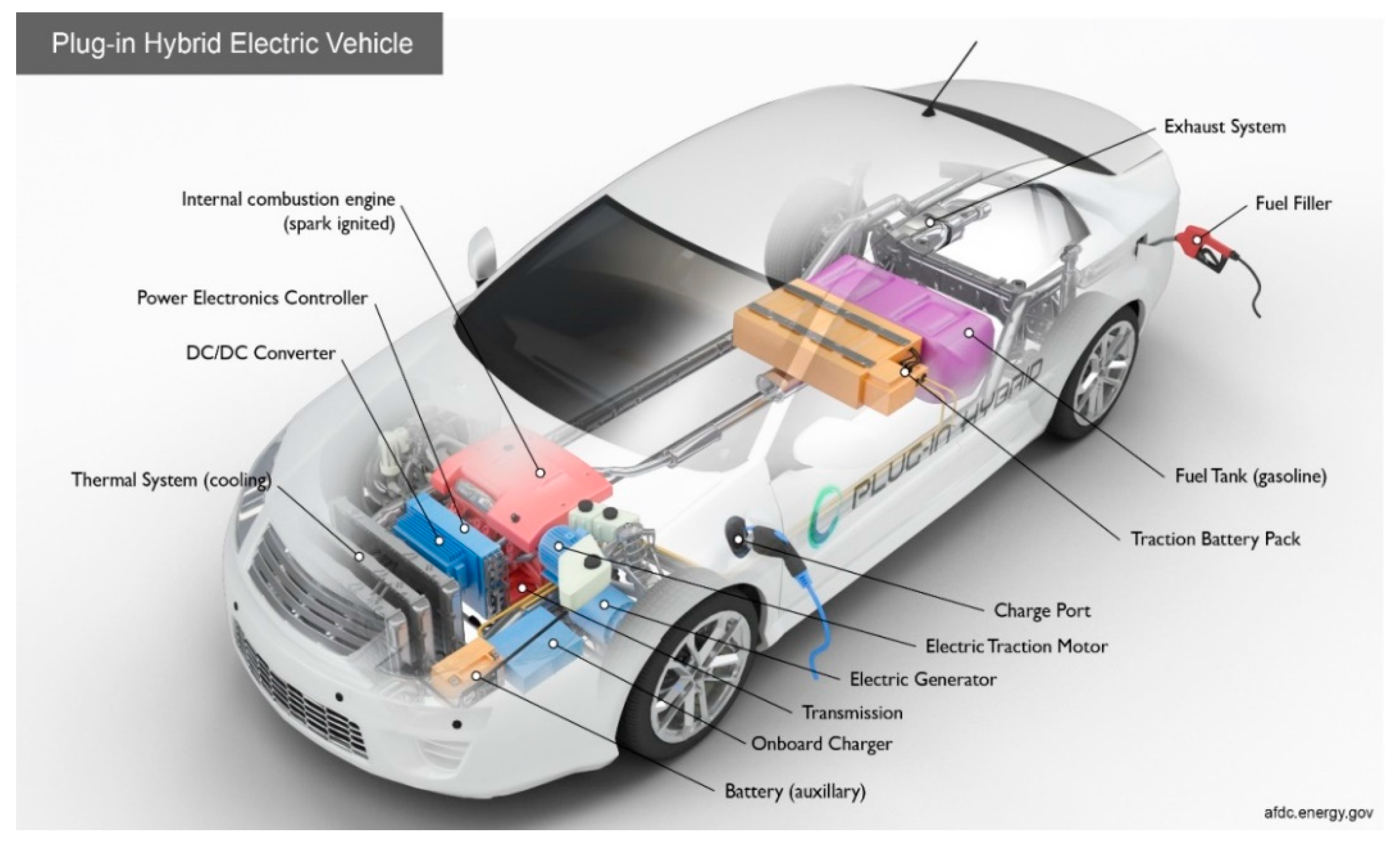

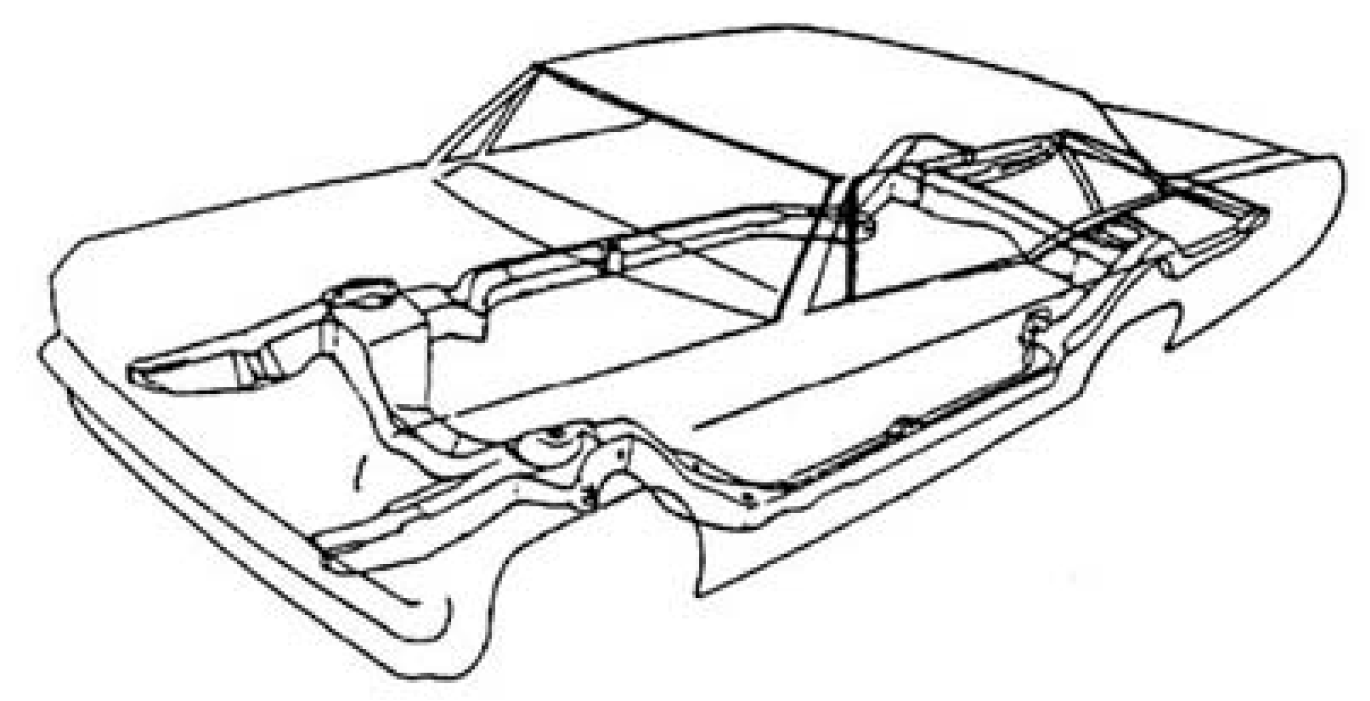

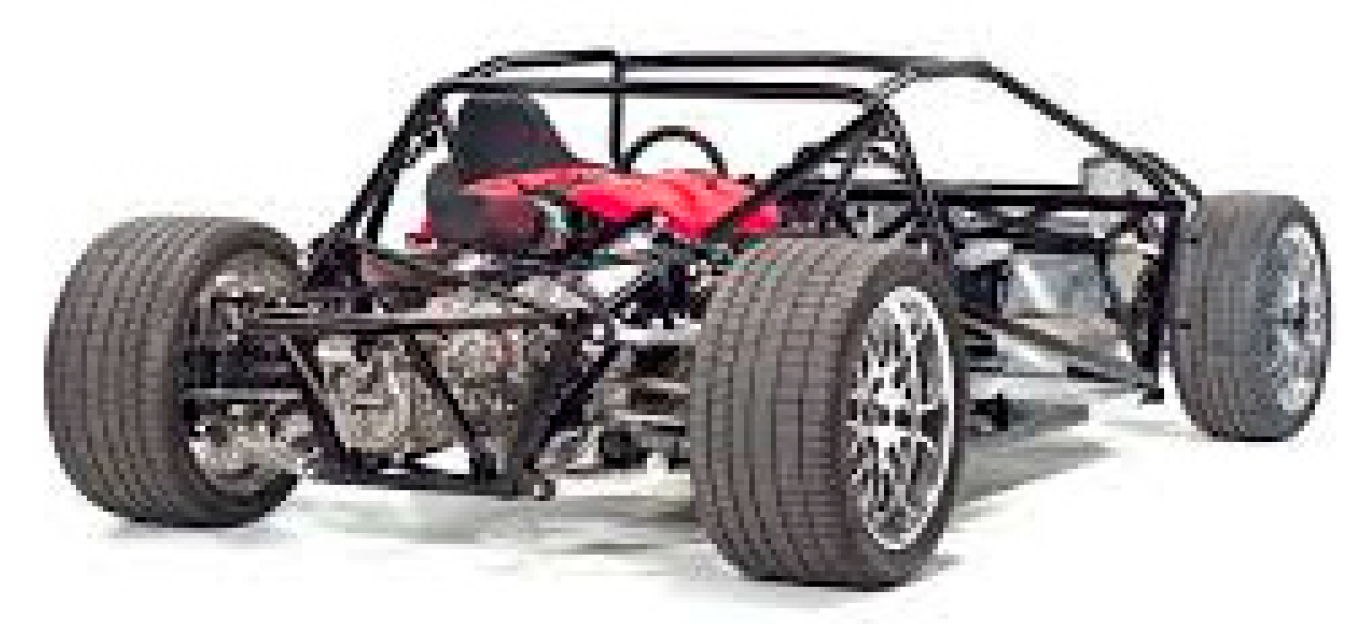


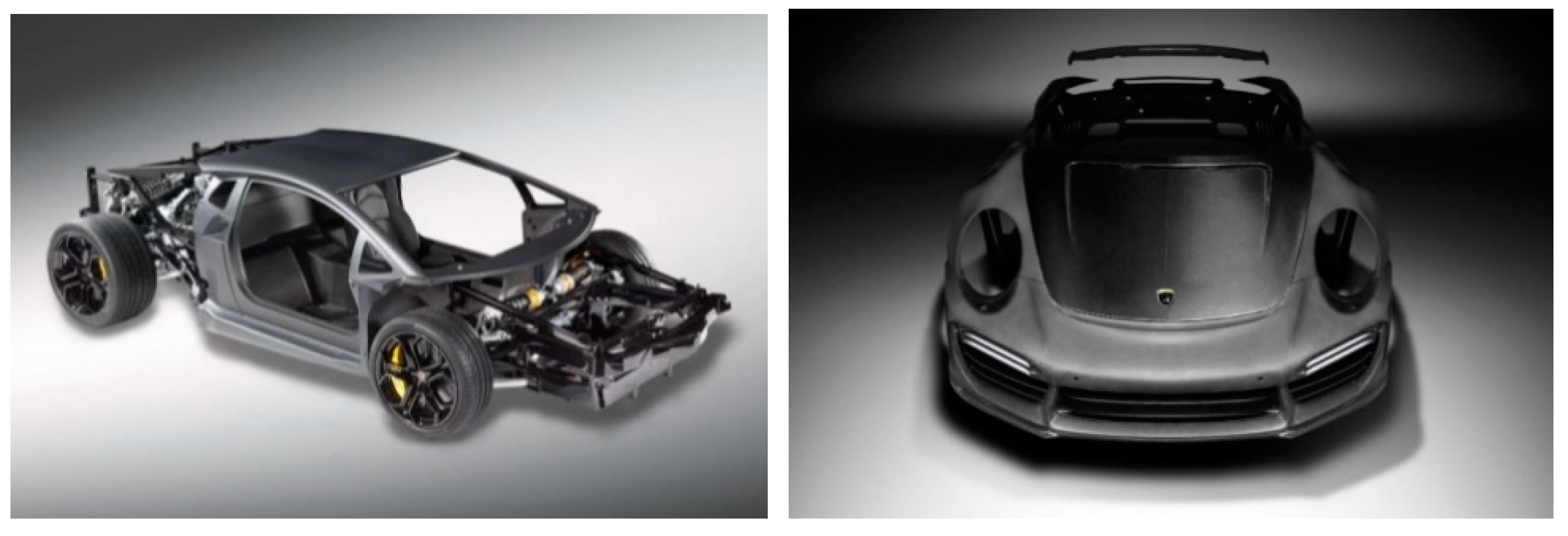
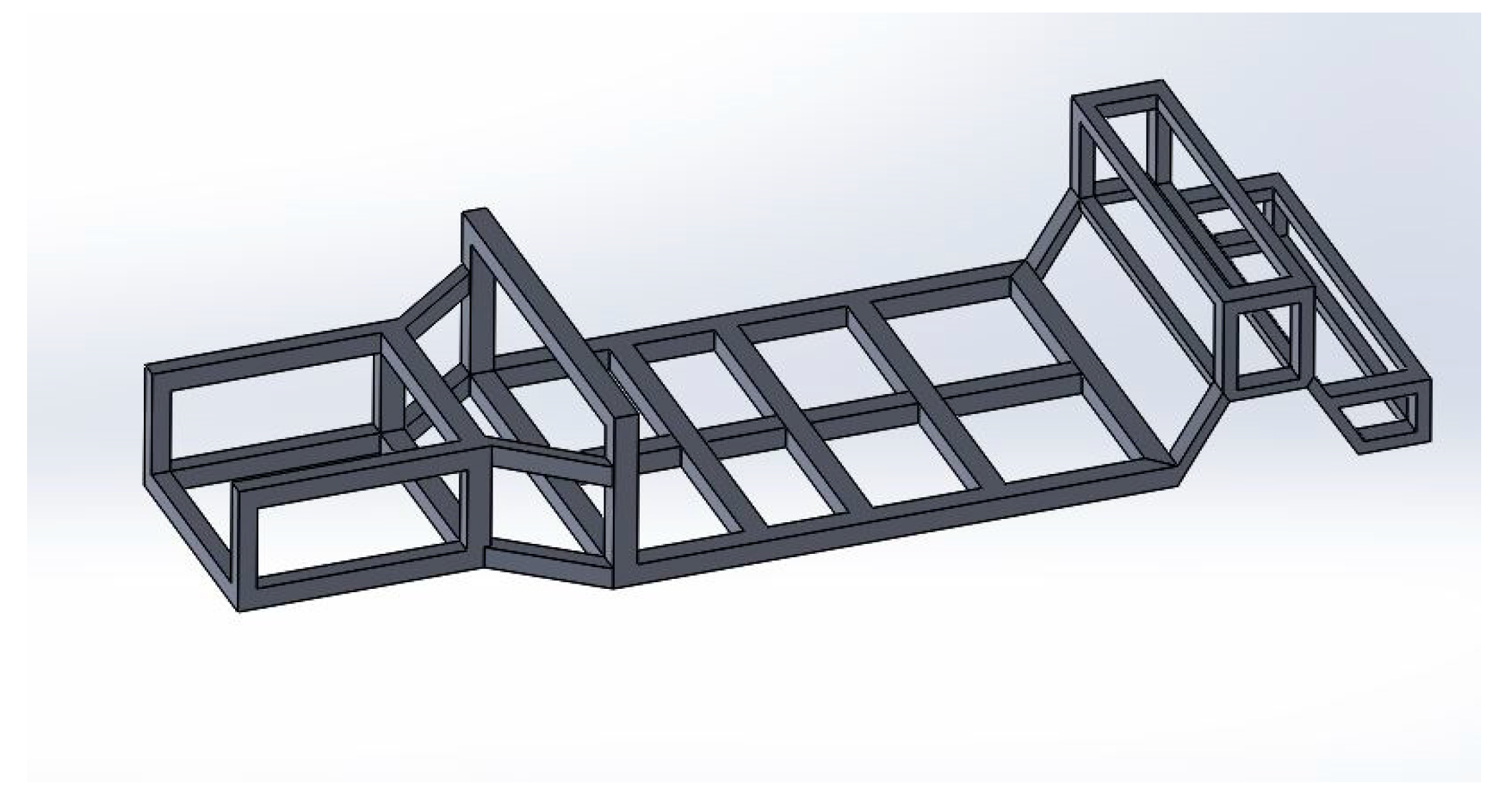

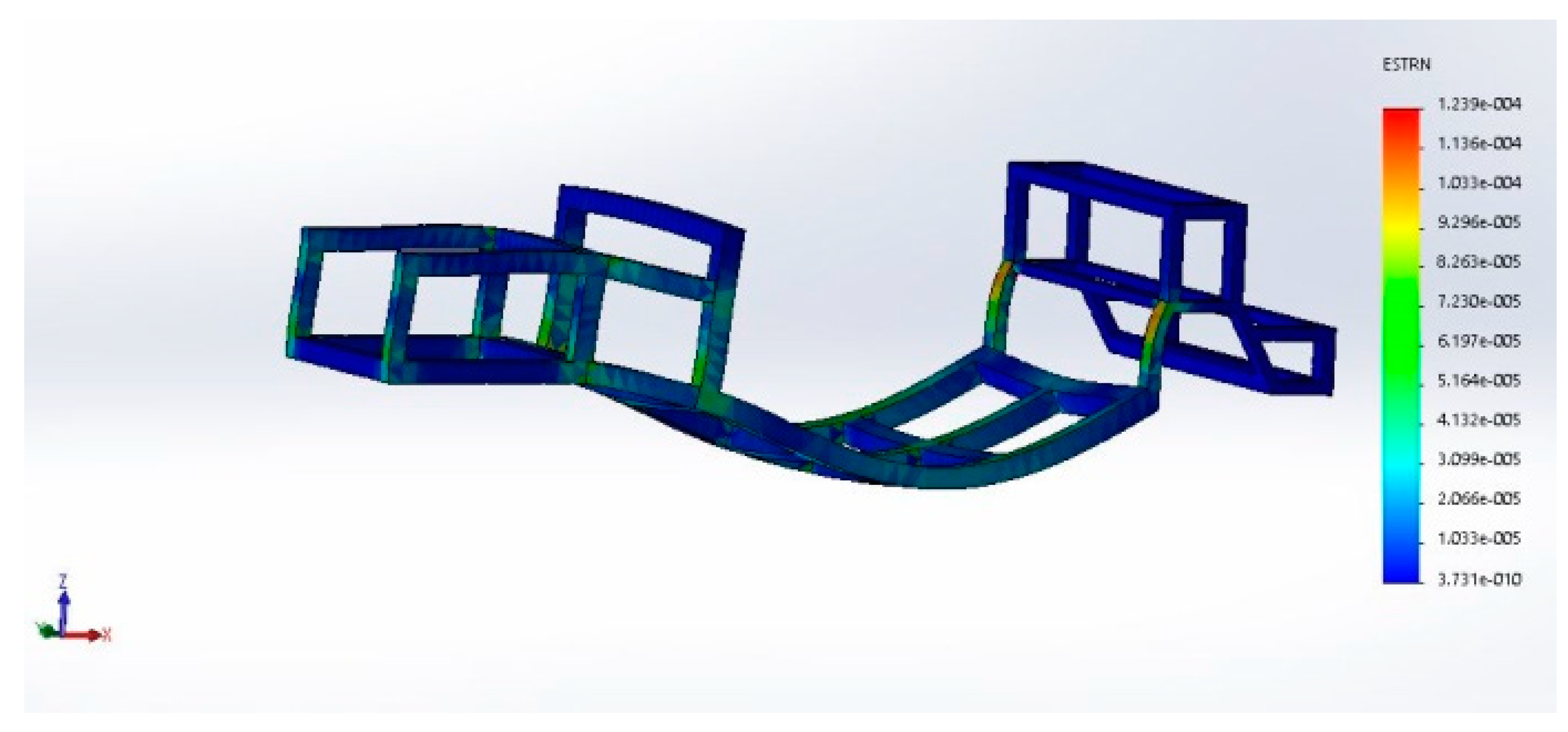
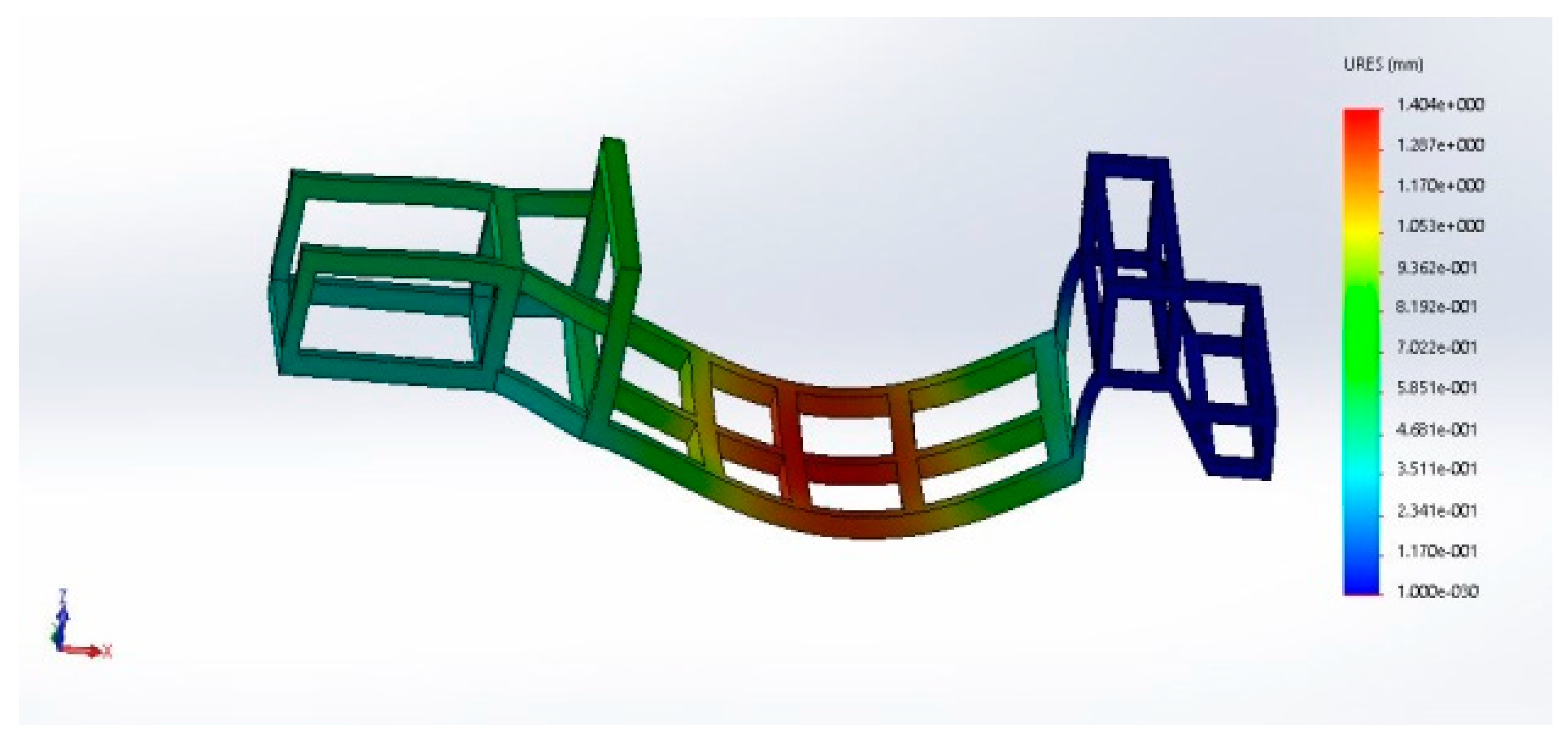

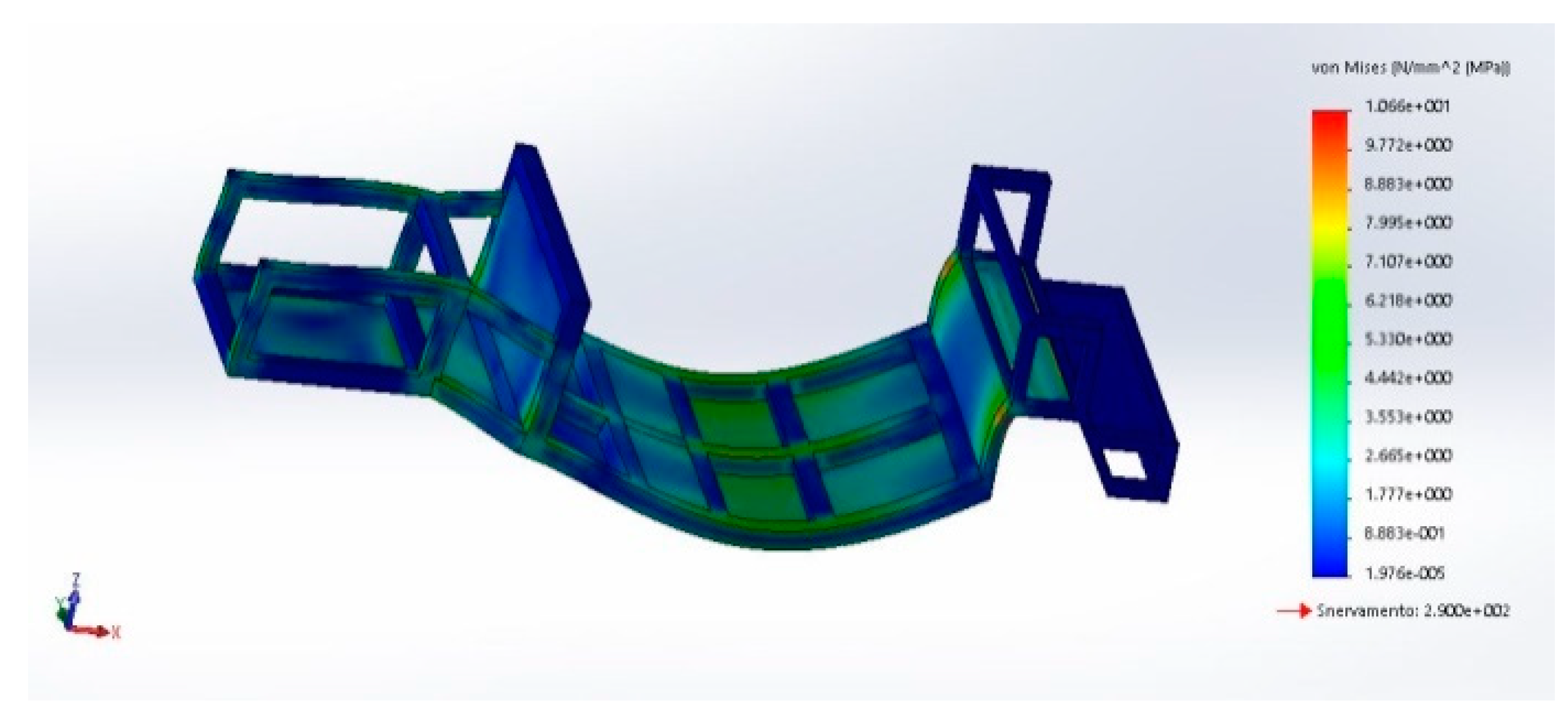
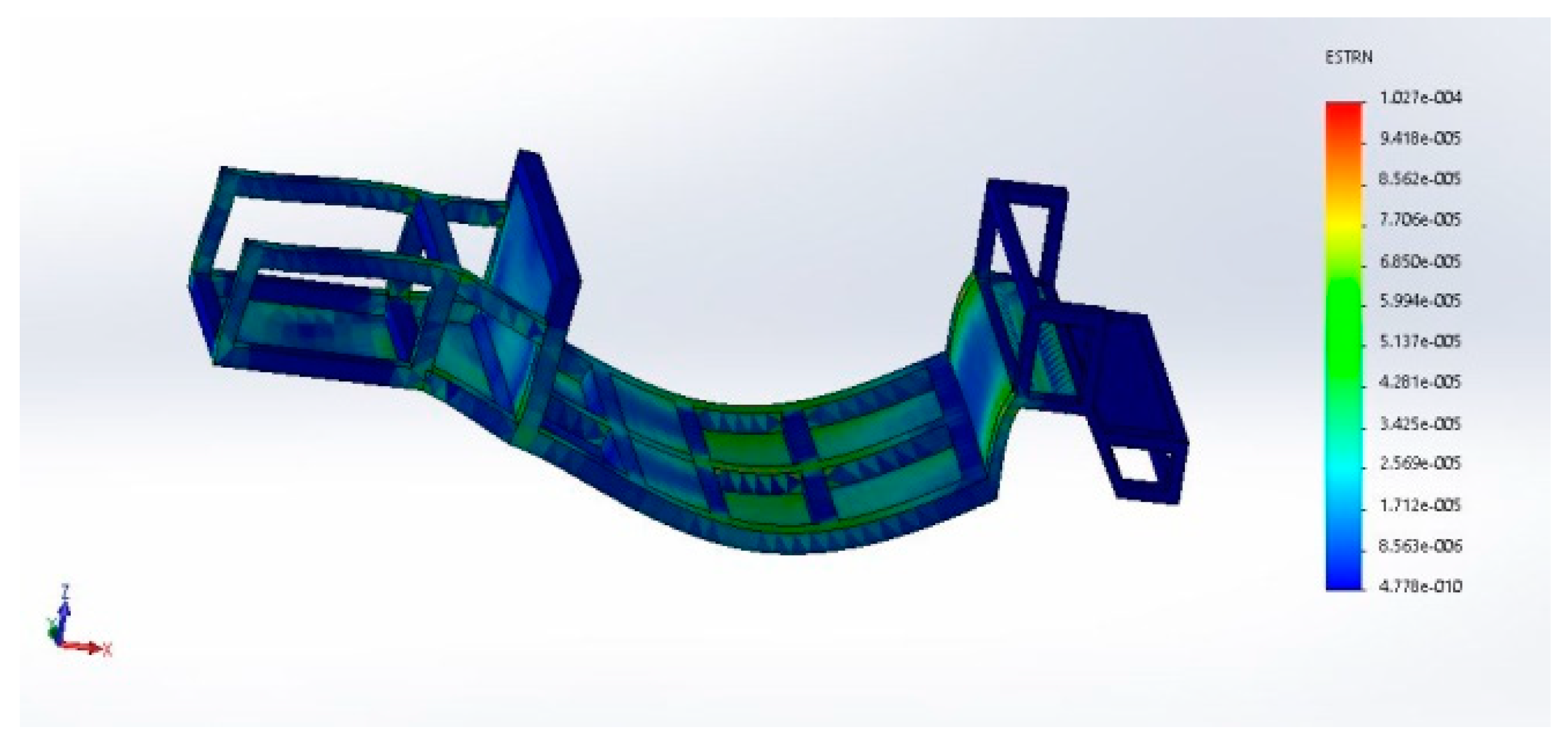











| Six Questions | Free Answers |
|---|---|
| WHO uses/buys the product? | The product is intended for the population groups that we could identify as the upper middle class. The car we are going to design falls into the category of so-called Executive cars. The clientele is therefore mostly composed of adult men over the age of 40 years old. In addition, cars of this kind are also attractive as regards the company car or taxi-limousine market. |
| WHAT are the uses of the product? | The product by its very nature can be identified as a long-distance car, which is ideal for long journeys in comfort and for transporting passengers equally comfortably and safely. The car could therefore easily perform the function of a company machine, being suitable for long journeys, also allowing for a possible saving in consumption. |
| WHERE is the product used? | The product is mainly used outside built-up areas, given its large size and performance characteristics. Its features make it the ideal product for long journeys on suburban roads and highways. The introduction of the electric motor, however, allows a greater use also in the city, where traveling at low speeds the electric motor would carry out much of the task minimizing consumption. |
| WHEN is the product used? | Its use is not subjected to seasonality and is almost unchanged throughout the year. Being a car of this type, its use will be daily and frequent in most cases. |
| WHY was it chosen? Why could it be chosen? | It guarantees good performance and safety, combined with high comfort and low consumption compared to cars in the same segment. Being a hybrid vehicle, it allows you to save on fuel, road tax, insurance, and parking, also allowing access to any LTZ. |
| HOW is the product used? | The product is used for long distances and for fast movements. |
| INDEPENDENCE MATRIX | Price | Performances | Comfort | Consumptions | Load Capacity | Aesthetics/Design | Accessories | Total (Dependence) |
|---|---|---|---|---|---|---|---|---|
| Price | 9 | 3 | 1 | 0 | 3 | 9 | 25 | |
| Performances | 9 | 1 | 9 | 1 | 0 | 0 | 20 | |
| Comfort | 3 | 3 | 0 | 3 | 1 | 0 | 10 | |
| Consumptions | 1 | 9 | 1 | 1 | 0 | 0 | 12 | |
| Load capacity | 3 | 3 | 0 | 0 | 0 | 6 | ||
| Aesthetics/Design | 1 | 0 | 0 | 0 | 3 | 1 | 5 | |
| Accessories | 9 | 0 | 3 | 0 | 0 | 1 | 13 | |
| Total (Independence) | 23 | 24 | 11 | 10 | 8 | 5 | 10 | 91 |
| IMPORTANCE MATRIX | Price | Performances | Comfort | Consumptions | Load Capacity | Aesthetics/Design | Accessories | Total | Importance Normalized |
|---|---|---|---|---|---|---|---|---|---|
| Price | 1 | 0 | 0 | 1 | 1 | 1 | 1 | 5 | 4.5 |
| Performances | 2 | 1 | 1 | 1 | 2 | 1 | 1 | 9 | 8.2 |
| Comfort | 2 | 1 | 1 | 1 | 2 | 0 | 1 | 8 | 7.3 |
| Consumptions | 1 | 1 | 1 | 1 | 2 | 0 | 1 | 7 | 6.4 |
| Load capacity | 1 | 0 | 0 | 0 | 1 | 0 | 0 | 2 | 1.8 |
| Aesthetics/Design | 1 | 1 | 2 | 2 | 2 | 1 | 2 | 11 | 10.0 |
| Accessories | 1 | 1 | 1 | 1 | 1 | 0 | 1 | 6 | 5.5 |
| AUDI | |
| Model: A6 45 3.0 TDI four tipt | A very elegant long sedan that combines a 3000 cc V6 Diesel engine with the Mild-Hybrid system. This system, 48 V only for 6-cylinder versions, is composed as follows: A belt start generator (BSG) and a lithium ion battery allow a reduction in fuel consumption and CO2 emissions thanks to greater energy recovery as well as to the engine cut-out during journeys of less than 60 km/h (inertia gear with zero emissions). The permanent connection of the BSG to the combustion engine ensures comfortable starting with low vibrations. What is surprising about this machine are the high values of expressible torque, which reaches 500 Nm. |
| BMW | |
| Model: 530e | The latest hybrid version of the BMW 5 series, also on sale since 2018, presents the Plug-in Hybrid technology. Among the most recognizable and noteworthy driving characteristics of BMW plug-in hybrid cars is the quietness and the so-called “electricboosting”. It means that in sudden short-term accelerations, such as overtaking, the electric motor works as a support for the petrol engine, ensuring an even more dynamic drive. The propulsion system consists of a 185 kW (252 hp) 4-cylinder petrol engine with BMW TwinPower Turbo technology, a 70 kW (95 hp) electric motor and a high-voltage lithium-ion battery with a capacity of 9, 2 kWh. The car offers different propulsion modes: The purely electric one is perfect for the city, the hybrid one offers the best possible combination between consumption and performance, while the combustion mode serves to save the battery capacity to drive later in exclusively electric mode. Intelligent energy management optimizes the power-efficiency factor of the hybrid system by choosing the most suitable mode in advance. The most astonishing figure among those collected is the consumption declared by the house, which is practically zero in the urban context thanks to the powerful electric motor which is fitted with Plug-in Hybrid technology. |
| KIA | |
| Model: Optima 2.0 GDI Plug-in Hybrid | The first goal of KIA for this car is certainly the reduction to the minimum of consumption and the achievement of maximum efficiency. The plug-in hybrid version has several tricks to better puncture the air not only visually but also physically. It has aerodynamic bumpers, ventilation grilles for intelligent radiators, dedicated 17“ wheels for a Cx of 0.25, against 0.27 of the other Optima and 0.24 of the extremely high-profile Toyota Prius. The tricks to make the Optima PHEV more efficient do not stop there, even the air conditioning and heated seats (and, optional, ventilated) play their part with the Driver Only function, which optimizes the driving position and excludes the rest of the passenger compartment. The regenerative braking system is in its third generation and is 11% more efficient. The only engine available in a hybrid version is the 156 Atkinson 2.0 petrol engine coupled to a 68 hp electric motor, powered by a modern 9.8 kWh lithium-ion battery“. This combination makes the Optima Plug-in Hybrid, the car with the least exciting performances, among its hybrid peers, but at the same time equipping it with one of the most capacious batteries on the market, which allows it an exclusively electric range of more than 50 km. The house declares a theoretical consumption of 62.5 km/L and CO2 emissions well below the average. |
| MERCEDES-BENZ | |
| Model: E 350e | The first E-Class with plug-in hybrid technology: the E 350e combines driving performance of surprising agility with driving at zero local emissions. With its traction system that combines internal combustion engine and electric motor, it plays a pioneering role in its category. The hybrid drive consists of a 4-cylinder petrol engine with a power of 155 kW (211 hp) and a maximum torque of 350 Nm and is integrated with an electric motor of 65 kW (88 hp) with maximum torque of 440 Nm. You can travel in pure electric mode for 33 km and reach a maximum speed of 130 km/h. The boost function adds an extra boost and the extra torque of the electric motor ensures a significant increase in agility. The battery recharging speed is the same as for other plug-in vehicles (about 90 min from a wall box/charging station or about 180 min from a domestic power outlet) and the battery can recharge even during charging in Charge Mode or for regeneration. The interaction of the electric motor and internal combustion engine can also be influenced by the mode selector. Depending on the driving program, up to four modes are available: HYBRID: all the hybrid functions of the car are available and are used automatically, depending on the driving situation and the course, to reduce consumption as much as possible. E-MODE: you can travel on pure electric power, for example in historic centers or when the battery is sufficiently charged to cover the remaining route. E-SAVE: the charge level of the battery is kept constant, to allow driving with pure electric power at a later time. The electric mode is therefore only available to a limited extent. CHARGE: it is useful to recharge the battery while driving, thanks to the internal combustion engine. The electrical operating mode is not possible. Once the destination has been set, using the data provided by the COMAND Online navigation system, the charge and discharge phases of the battery are automatically adjusted to ensure ideal energy exploitation along the entire route. A further innovation presented by Mercedes is the haptic accelerator, which reduces fuel consumption and therefore also exhaust gas emissions. For this purpose, it provides two information: when traveling in E-MODE you feel a resistance point of the accelerator pedal, this means that you have reached the maximum limit of electric power that can be supplied and by pushing on the accelerator beyond this point, the internal combustion engine. |
| LEXUS | |
| Model: GS 300h | From the moment you sit behind the wheel, self-recharging batteries are ready to deliver power without the need for any prior charge. Lexus Self-Charging Hybrid technology combines the power of a petrol engine with the efficiency of an electric motor. Thanks to a dedicated control unit, the system is able to decide in complete autonomy when to use one motorization, the other, or both. The system constantly monitors the battery charge, providing to recharge it during all the driving phases. As for performance, the Lexus GS 300h is powered by a 2.5-L, 4-cylinder direct-injection petrol engine with 180 hp at 6000 rpm, and a 142-hp electric unit, for a total available power of 223 hp, discharged entirely on the rear wheels. Performance is clearly not a sports car, as reported by the House: the maximum speed is 190 km/h and acceleration from 0 to 100 km/h is completed in 9.2 s. |
| Model: GS 450h | For more sporting performance just buy the older sister, equipped with a 292-horsepower 3.5-L V6 petrol engine, coupled to the hybrid system that includes a 200 hp permanent-magnet synchronous electric motor for a total power of 345 horsepower. These propellers move an epicycle gear train to which the generator is also connected: the system then transmits the motion to the rear wheels and acts as a speed change with a continuous variation of ratio (eCvt). This more sporting set-up has a list price of around 75,000 euros, the most expensive model among those analyzed. |
| INFINITI | |
| Model: Q70 Hybrid | Equipped with a 3.5-L V6 petrol engine, coupled with an electric motor, it delivers 364 horsepower, which allows it to accelerate from 0 to 100 km/h in 5.3 s, an incredible figure considering the car’s weight 1894 Kg. But the advantages do not end there, the Q70 Hybrid is equipped with every type of comfort and cutting-edge technology such as the Forest Air system that purifies the air, maintains the right level of humidity and releases a slight fragrance inside the cabin. The boot is a bit limited for this version due to the presence of lithium ion batteries. Another positive point to note is a very large tank (70 L), which however will be emptied faster than the others, as the Q70 is the car with the highest fuel consumption declared among its peers. |
| VOLVO | |
| Model: S90 | Starting from 2017, even S90 like other Volvo cars before, adopts Twin Engine technology. This technology, as we have already seen for other hybrid cars, is of the Plug-In Hybrid type. More than that, the Twin Engine consists of using the following system:
The T8 Twin Engine AWD is the result of the combination of a 2-L four-cylinder petrol engine with turbocharger and volumetric compressor and an electric motor, and is capable of delivering an astonishing total power—402 hp and 400 Nm—comparable to that of engines with multiple cylinders. The petrol engine drives the front wheels while the rear ones receive traction from the electric motor, providing instant acceleration and all-wheel drive when needed. In the “Pure” mode, with the use of the electric motor only, there are zero emissions and up to 50 km of autonomy. In the “Hybrid” mode consumption is enviable and the emissions are extremely reduced. |
| Brand | AUDI | BMW | KIA | MERCEDES | LEXUS | INFINITI | VOLVO | |
|---|---|---|---|---|---|---|---|---|
| Model | A6 | 5 Series | Optima | E Class | GS 300h | GS 450h | Q 70 | S90 |
| TOP FLOP ANALYSIS |  |  |  |  |  |  |  | |
| Lenght [mm] | 4940 | 4940 | 4860 | 4920 | 4880 | 4880 | 4980 | 4960 |
| Width [mm] | 1890 | 1870 | 1860 | 1850 | 1840 | 1840 | 1850 | 1880 |
| Height [mm] | 1460 | 1480 | 1470 | 1470 | 1460 | 1460 | 1490 | 1440 |
| Weight [kg] | 1900 | 1845 | 1780 | 1925 | 1735 | 1825 | 1894 | 2019 |
| Trunk capacity [dm3] | 530 | 410 | 307 | 540 | 450 | 450 | 350 | 500 |
| Supply | HYB. | HYB. | HYB. | HYBRID | HYB | HYB. | HYB. | HYB. |
| Displ. [cm3] | 2967 | 1998 | 1999 | 1991 | 2494 | 3456 | 3498 | 1969 |
| Power [Kw] | 210 (286) | 185 (252) | 151 (205) | 210 (286) | 164 (223) | 254 (345) | 268 (364) | 296 (402) |
| Max Sp. [km/h] | 250 | 235 | 192 | 250 | 190 | 250 | 250 | 250 |
| Acceleration 0–100 km/h [s] | 6.3 | 6.2 | 9.4 | 6.2 | 9.2 | 5.9 | 5.3 | 5.1 |
| Max Tor. [Nm] | 500 | 290 | 189 | 350 | 221 | 352 | 350 | 400 |
| Price [Euro] | 64.000 | 65.000 | 44.000 | 68.000 | 58.000 | 75.000 | 65.000 | 73.000 |
| Tank [liter] | 63 | 46 | 55 | 66 | 66 | 66 | 70 | 50 |
| Av. Cons. [L/100 km] | 5.67 | 1.9 | 1.7 | 2.6 | 4.9 | 6.3 | 6.7 | 2.1 |
| CO2 Em. [g/km] | 146 | 44 | 37 | 57 | 113 | 145 | 145 | 46 |
| Th. Aut [km] | 2300 | 3400 | 2380 | 1400 | 1100 | 1127 | 2500 | |
| El. Aut [km] | 3 | 46 | 54 | 33 | 40 | |||
| Battery [kWh] | 1.3 | 9.2 | 9.8 | 6.2 | 9.2 | |||
| Charging times [h] | 4 | 6 | 3 | 4 | ||||
| Number of TOP | 2 | 0 | 7 | 2 | 2 | 2 | 3 | 2 |
| Number of FLOP | 4 | 1 | 5 | 0 | 1 | 2 | 3 | 2 |
| Delta Δ | −2 | −1 | 2 | 2 | 1 | 0 | 0 | 0 |
| Innovation Column | Ideal Car |
|---|---|
| Lenght [mm] | <4860 |
| Width [mm] | <1840 |
| Height [mm] | <1440 |
| Weight [kg] | <1735 |
| Trunk capacity [dm3] | >540 |
| Supply | HYBRID |
| Displacement [cm3] | >3500 |
| Power [Kw (hp)] | >296 (402) |
| Max Speed [km/h] | >= 250 |
| Acceleration 0–100 km/h [s] | <5,1 |
| Max Torque [Nm] | >500 |
| Price [Euro] | <44.000 |
| Tank [liter] | >70 |
| Average Consumptions [L/100 km] | <1.7 |
| CO2 Emissions [g/km) | <37 |
| theoretical Autonomy [km] | >3400 |
| Electric Autonomy [km] | >54 |
| Battery [kWh] | >9.8 |
| Charging times [h] | <3 |
| WHAT-HOW MATRIX | Lenght [mm] | Width [mm] | Height [mm] | Weight [kg] | Trunk capacity [dm3] | Supply | Displacement [cm3] | Power [Kw (hp)] | Max Speed [km/h] | Acceleration 0-100 km/h [s] | Max Torque [Nm] | Price [Euro] | Tank [L] | Average Consumptions [L/100 km] | CO2 Emissions [g/km) | theoretical Autonomy [km] | Electric Autonomy [km] | Battery [kWh] | Charging times [h] | Total |
|---|---|---|---|---|---|---|---|---|---|---|---|---|---|---|---|---|---|---|---|---|
| Price | 1 | 9 | 9 | 3 | 9 | 9 | 9 | 1 | 1 | 1 | 1 | 53 | ||||||||
| Performances | 3 | 3 | 3 | 9 | 9 | 9 | 9 | 3 | 9 | 3 | 1 | 3 | 1 | 1 | 66 | |||||
| Comfort | 9 | 9 | 9 | 1 | 3 | 3 | 1 | 35 | ||||||||||||
| Consumptions | 3 | 3 | 9 | 3 | 1 | 1 | 1 | 9 | 9 | 9 | 9 | 3 | 1 | 61 | ||||||
| Aesthetics/Design | 1 | 1 | 1 | 1 | 3 | 3 | 10 | |||||||||||||
| Total | 10 | 10 | 10 | 9 | 6 | 6 | 21 | 21 | 13 | 19 | 19 | 18 | 0 | 19 | 12 | 11 | 13 | 5 | 3 |
| DENSITY | |
|---|---|
| Material | d kg/dm3 |
| Aluminum | 2.70 |
| Titanium | 4.50 |
| Steel | 7.80 |
| ALLUMINIUM ALLOYS’ CHARACTERISTICS | |
|---|---|
| Series 1000 | This composition is characterized by excellent corrosion resistance, high thermal and electrical conductivity, low mechanical properties and excellent workability. It is possible to have hardenings for cold working. |
| Series 2000 | The presence of copper allows for an increase in properties following heat treatment, which can be further improved with artificial aging. These alloys are often plated with high purity 6000 and 7000 alloys which give physical and electrolytic protection to the heart and increase the resistance to corrosion |
| Series 3000 | Manganese is the most common alloy; they are thermally untreatable alloys and possess a high resistance to corrosion and high formability. |
| Series 5000 | Magnesium gives good weld ability and excellent corrosion resistance. |
| Series 6000 | The simultaneous presence of silicon and magnesium determines the possibility of heat treatment; they have good formability, high resistance to corrosion with high mechanical properties. |
| Series 7000 | It has good mechanical properties but a high cost. |
© 2020 by the authors. Licensee MDPI, Basel, Switzerland. This article is an open access article distributed under the terms and conditions of the Creative Commons Attribution (CC BY) license (http://creativecommons.org/licenses/by/4.0/).
Share and Cite
Francia, D.; Donnici, G.; Ricciardelli, G.M.; Santi, G.M. Design for Six Sigma (DFSS) Applied to a New E-Segment Sedan. Sustainability 2020, 12, 787. https://doi.org/10.3390/su12030787
Francia D, Donnici G, Ricciardelli GM, Santi GM. Design for Six Sigma (DFSS) Applied to a New E-Segment Sedan. Sustainability. 2020; 12(3):787. https://doi.org/10.3390/su12030787
Chicago/Turabian StyleFrancia, Daniela, Giampiero Donnici, Gian Marco Ricciardelli, and Gian Maria Santi. 2020. "Design for Six Sigma (DFSS) Applied to a New E-Segment Sedan" Sustainability 12, no. 3: 787. https://doi.org/10.3390/su12030787





